It doesn’t happen too often that you play a brand new analog synthesizer for the first time and everything is perfect, just the way it should be. But this was the case with the PERfourMER MKII.
Quite a few modern synthesizers try to con us. They make a musician’s life more difficult than necessary, because …
Possibility no. 1: The synthesizer contains presets of medium quality … average sounds (some good, some really bad) making it difficult to realistically evaluate sound potential. You simply can’t tell what that synthesizer really sounds like …
Possibility no. 2: You’re faced with mediocre hardware. With wobbly and fiddly knobs. With buttons and switches placed way too close to each other (like sardines in a can). With insufficient control elements that significantly reduce the joy you could be having with the instrument.
Possibility no. 3: The synthesizer lacks certain important features. Maybe MIDI is missing (if CV/Gate is installed) or CV/Gate is missing (if MIDI is installed). A modern studio containing both analog and digital components needs both communications busses!
These are just a few of the reasons why a complete and well-designed instrument such as the four-channel Vermona PERfourMER synthesizer should not be taken for granted.
Interestingly enough, it’s rarely the sound which gives cause for criticism. Analog circuits simply sound good (the real reason for the renaissance of analog synthesizers).
Ye Olde Rule says: “Good sound alone is not enough”. And so it’s the rare, the very rare case when it’s love at first sight between the instrument and the musician.
That’s the secret of the congenial relationship between the PERfourMER and myself. The very first notes I played brought back memories of the Roland Jupiter-4 (without chorus): that dry, classic Roland analog sound of the vintage years.
Appetizing, in a word.
There’s the wonderful pulse wave and each of the 4 voices sounds somewhat different. It’s possible to create this vivacity on purpose with the PERfourMER – with just a few adjustments – in contrast to the Jupiter-4, where this can be an unintended side effect.
And then there’s that unison-mode, which stands for rich sonority. There are no superflous functions on the PERfourMER. In short time you’ll be best friends and – this is the hammer – you’ll be knee deep in the creative process from the very beginning.
It goes without saying that the PERfourMER MKII is first and foremost an independent instrument, whereby the filter resonance has its own special character.
Just for comparisons, and as a sort of reference, consider this: I would call the PERfourMER a combination of a Roland Jupiter-4 and Oberheim 4-Voice. The first association pertains of course to sound, the second to technical matters. 4 SEMs à la Oberheim and 4 parallel synthesizers à la PERfourMER MKII are simply one and the same concept, especially since the crucial Play Modes are present in both cases.
The sum of all the small things
Excuse us if we repeat ourselves, but good sound alone is not enough. The PERfourMER MKII will wow you at a lot of different levels.
Let’s start with the outside. Solid casing, good knobs (not a single knob wobbles), a pleasant, subtle resistence to the touch, large sockets, clear labelling.
Another point to be kept in mind is the power supply. This can be a tiresome subject as we recently mentioned in the course of one of our rare criticisms of the John Bowen Solaris. The PERfourMER has found an ideal solution, in an old-fashioned sort of way. The PSU is built-in. All you need is a regular 3-pole power cable. Just turning the instrument on has a reliable, comfy feel.
There’s MIDI (of course), and an option for CV/Gate. Whether you use the Alesis Andromeda as a master keyboard (as in our test) or the analog drum sequencer TAMA TSQ1000 with 4 triggertracks (as in our test): the PERfourMER is very cooperative and easily controllable.
Also, control elements are well dimensioned and well spaced (fat fingers are no problem here). And then, the four parallel synthesizers are intelligently arranged, with a few additional small technical goodies located on the side.
White Hot noise – a question of character?
This absolutely noble concept (yielding an equally noble analog sound) goes hand in hand with a special „specialty“: we have to put up with a little static in the audio path. It’s not bad and let’s not lose our perspective here. Think back to the golden days of analog technique. A significant aspect of the Jupiter-4 sound (not to be eliminated), for example, was noise, partly thanks to the Roland stereo chorus.
Korgs PS-3100 is a little “noisy” and Rolands Jupiter-8 has a permanent buzz in the audio signal. And yet, no one would think to criticize these instruments for having a bad sound.
I thus gladly accept the subtle „hot noise“ of the PERfourMER MKII as a characteristic of its very characteristic sound. After all, we are talking about an analog instrument …!
Noise in the audio path increases corresponding to adjustments in the filter resonance settings. Well, actually, to be exact, the overall volume increases. This behaviour is a little weird, which is why I contacted Vermona and asked them for an explanation. Thomas Haller kindly answered immediately.
„That’s correct. The amount of audio level increases corresponding to higher resonance settings. This is due to our special filter design. In most cases, there’s a loss in volume when filter resonance is raised. By modifying the filter design, we have compensated for eventual volume loss. Filter output level increases in direct relation to resonance settings.“ (Vermona)
So, let’s forget about the „hot noise“. The bottom line is: this is not important. We absolutely recommend the Vermona. Its sound is a delight. Here’s a good place to „take a hear“ of the 45 minutes of PERfourMER MKII audiofiles attached to this review. Press „Play“.
Now back to business.
Discrete analog!
The PERfourMER MKII is completely „discrete analog“ (with one exception: the LFOs). It contains …
4 VCOs
- waveforms: sine, triangle, pulse, saw, noise and EXT.
- octave ranges 4-8-16-32, further HI and LO (which turn the oscillator into a wide-range LFO).
- fine tune
- glide
- EG modulation (+/-) … for those typical electronic drum sounds.
- LFO modulation and pulse width modulation
The pulse wave is extremely beautiful. It reminds me of the Jupiter-4 and other early Roland synthesizers. But it’s even more than that! PERfourMER’s pulse width modulation allows for unbelievably “fat” sounds, since there’s a separate LFO for each of the 4 oscillators. PWM can also be effected by the modulation wheel of your master keyboard (independently switchable for each synthesizer channel, of course).
PWM by LFO is especially interesting. The sound is capable of fading completely (0% pulse width). One of the best PERfourMER patches is a 4-VCO pulse tone with independent LFO modulation. Each of the oscillators fades in and out, depending on the channel’s LFO speed and PWM degree. PWM by modulation wheel, on the other hand, is less dramatic. It doesn’t seem to reach all the way to 0% pulse width, which is a bit a shame …
The frequency settings LO and HI are worth mentioning. (In this case, the term OCTAVE is of course not correct). Both settings disconnect the VCO from keyboard voltage and turn it into a free audio generator, the frequency of which is adjustable by the TUNE knob. Frequency ranges from sub-audio all the way up. LO is primarily responsible for sub-audio-frequencies and can be used as an LFO.
Synchronization
With 4 VCOs, oscillator-synchronization is an important aspect which Vermona has kept in mind. Each VCO can be synchronized to the preceding oscillator: VCO 2 to 1, VCO 3 to 2, VCO 4 to 3. Good stuff. Synchronization at its finest.
Crossmodulation
The same principle applies to crossmodulation. Each oscillator can influence the next. The crossmod-knob is one of those little goodies so conveniently placed at the left side of the front panel.
VCO Out / EXT In
Those looking for a „naked“ VCO sound will be glad to hear that there is a VCO OUT socket with every synth channel. This has to be of interest to owners of modular systems, since they can run the pure VCO material from the PERfourMER through other modules (such as multimode filters, etc.). A small, but weighty detail.
On the other hand, you’re able to feed an external audio signal into each PERfourMER channel. Which means this instrument is a fourfold filter bank. Not a bad deal.
4 VCFs
The 24dB low pass filter is of elite quality and just as we like it: snappy sounds resulting from strong self oscillation at high filter resonance.
Filter modulation is possible via the envelope (+/-), the LFO or aftertouch (MIDI). Keyboard-tracking is fixed at 0/50/100%.
Filter FM
As with the „cross“-crossmodulation between VCOs, each filter can be influenced by its preceding oscillator. The epitome of filter FM. It goes without saying that metallic and other experimental sounds can be easily created.
LFO
- waveforms: saw, pulse, sine and S/H
- frequency range from 0,05 to 250 Hz
Small is beautiful. The LFO alone has practically everything you need. Those of you who miss a voltage control feature will find this an option with the VCO in LO (or HI) mode.
LFO synchronization and phase
Let’s not forget these two LFO features. The low frequency oscillator serves as a modulation source for VCO and VCF, as we have said. A superficial glance at the panel might lead to the false conclusion that the 4 LFOs can not interact with each other and that only positive modulation is possible. But that’s wrong …
The synchronization switch is the one extra on the left panel that we haven’t spoken about yet. LFO 2, for example, can be linked in parallel to LFO 1. The latter remains responsible for the combined speed, while LFO 2 phase is adjustable (from 0 to 180°).
In position „0“ the two LFOs have the same phase. Turning the phase knob to 180° inverts LFO 2 so that it runs contrary to LFO 1. Beautiful. Intermediate positions (in which one LFO lags a bit behind the other, etc.) also yield interesting results.
Since there are 4 LFOs at your disposal in addition to the 4 VCOs/LFOs in LO/HI range, it is obvious that the PERfourMER MKII isn’t just capable of little niceties, but is good for very surprising effects. The individual synthesizer channels of the PERfourMER are capable of communicating with and reacting to each other. Indeed, the instrument totes high experimental potential.
Last but not least, the LFOs can be synced to MIDI clock.
Envelopes
Each part of the PERfourMER has its own ADSR envelope. The attached audiofiles give plenty of evidence that the instrument can be snappy. But I also find the optionally long attack- and release-times attractive. In LEGATO mode, the envelopes only trigger when a new key is hit. This function, too, is individually adjustable for all 4 synthesizers …
VCAs
Each VCA is either regulated by the above-mentioned envelope, by an organ-type EG (100% sustain), or by a HOLD function („ON“).
In addition, VCA modulation can be effected via velocity. As with all else, this function can be individually activated for each of the 4 synthesizers. Besides the alloted VOLUME knob, each channel can be set anyware from LEFT to RIGHT with the panorama knob.
Play Modes
Now we get to the heart of the subject. As in the Oberheim 4-Voice, here too the voice-assign modes are of great musical significance. They distinguish the PERfourMER MKII concept from all other synthesizers on the present market.
The play modes in detail:
- M1: monophonic, unison. Massive 4 VCO / 4 VCF / 4 VCA / 4 EG / 4 LFO sounds. Inspiring.
- M2: monophonic, sequential. Each incoming MIDI note alternates between the four synthesizer channels. This brings back memories of the Korg Mono/Poly arpeggiator.
- D1: duophonic, alternating. Synthesizer 1/2 and 3/4 are connected (two synthesizers, each with 2 VCOs, 2 LFOs, 2 VCFs. 2 VCA und 2 EG). Each incoming MIDI note alternates between the 1st and 2nd synthesizer.
- D2: duophonic, 2-voiced. Enables simple polyphonic playing with both synthesizers playing simultaneously.
- P1: polyphonic, 4-voiced. Extremely attractive: 4 independent voices, that means 4 independent timbres sound polyphonically. Here the PERfourMER „remembers“ the timbre (sound channel) of once-played notes.
- P2: polyphonic, 4-voiced. But contrary to P1 the sound channels are not habitually linked to incoming MIDI notes. The PERfourMER simply plays the next „free“ sound channel.
Perfo(u)rmance – MIDI, CV/Gate, beatings at your fingertips
It took a couple of weeks for me to realize how clever the PERfourMER MKII concept really is. It’s possible to assign an individual MIDI channel to each synthesizer. Those laborious CV/Gate modifications of the past (just think of the Oberheim 4-Voice) are redundant here, since you now get these same control options via MIDI. (Which doesn’t mean that CV/Gate is useless. We’ll get back to that later.)
I’d like to take a little detour and explicitly praise the Manikin Schrittmacher sequencer. It’s a perfect partner for the PERfourMER MKII …
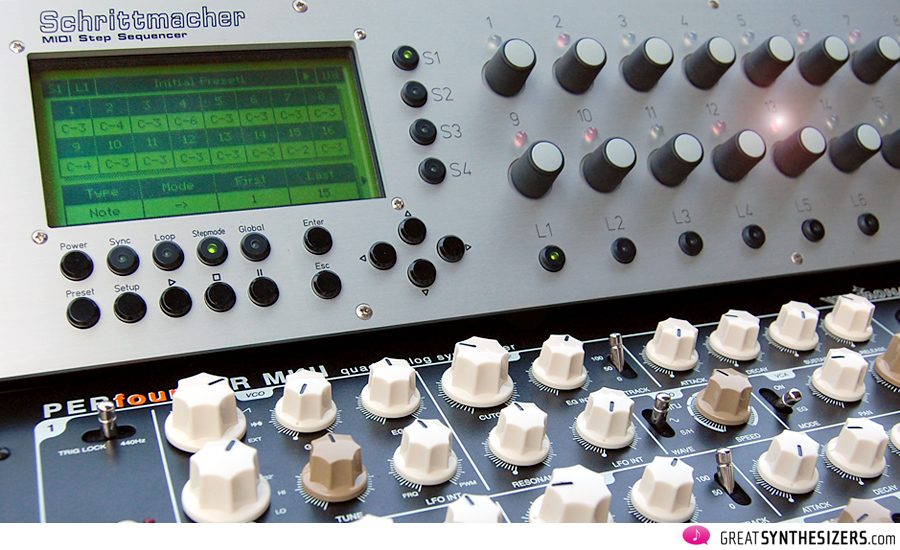
The PERfourMER is an unbelievable creative tool – especially in combination with a powerful MIDI step sequencer.
4 independent note- and aftertouch-tracks enable you to control each of the 4 synthesizers separately with individual patterns and filter modulations for each channel.
But the optional analog control via CV/Gate has a charm all its own. Some of the attached samples are created by using the analog trigger-sequencer TAMA TSQ1000. It has 6 triggertracks (whereby, needless to say, I could only employ 4 with the PERfourMER). These automatically set the „drum beats“ of the Vermona in motion.
Purists tend to revert to CV/Gate because of the „human feel“ (beautiful groove) native to analog sequencers.
A specialty of the PERfourMER MKII is that you can activate pitchbend control for each synthesizer channel individually. It’s really easy, for example, to utilize synthesizer 1 and 2 as a „potent“ lead voice, simultaneously controlling just the second synth via pitch bender. Beatings at your fingertips, that’s exactly what you get. Minimal pitchbend movements have a huge effect on the sound, it’s really ingenious.
Thus, too, with the sync-sounds. As soon as the slave synthesizer (the second one) is controlled via pitchbend, you can manually create that famous sync-effect. As with the good old Moog Prodigy.
As you can see, I got to know the PERfourMER MKII with all its inherent possibilities “slice by slice”. Every little feature promissed an immediate, useful and – musical ! – gain. And it was these little details that actually made it „love at first sight“.
I almost forgot the manual trigger button (TRIG) for the envelope (there are 4 of them). You won’t be using this much in live performance, but I sense clear advantages for every-day life in the studio. Need some proof? For a quick sound check just trigger the instrument manually. No setting up complicated connections via MIDI or CV/Gate.
By the way, the PLAY MODES are connected to the TRIG buttons. So in M1 mode, any manual trigger starts all four envelopes, whereas in P1 mode any trigger button lets the sound jump from one synthesizer channel to the next.
“Sequences”
By the way, the TRIG buttons also start the 16 internal sequences. These are pre-set. To be exact, there are 4 single tones and 12 sequences:
- 1: VCOs in the 1. octave
- 2: VCOs in the 2. octave
- 3: VCOs in the 3. octave
- 4: VCOs in the 4. octave
- 5 to 16: 12 factory sequences, to be played as they are
We don’t want to forget the built-in tuning fork, the „A = 440 Hz test tone“ switch.
Little list of wishes (five things)
- First, a further reduction of the (admittedly barely audible) „hot noise“. You may not even hear it.
- Second, I’d swap the velocity and aftertouch allocations: VEL for VCF and AFT for VCA.
- Third, automatic (voltage) control of pan.
- Fourth, CV sockets for VCF control.
- Fifth, the simplest of the lot: the use of coloured knobs for programming comfort. This would enhance the very clear arrangement of the front panel. Red knobs, for instance, for the VCFs (filter frequencies) and VCOs (waveforms). This could somewhat reduce the effectiveness of the already elegant colour design (anthracite – beige – brown).
The essence
The PERfourMER MKII is convincing: I like its authentic analog sound and its splendid performance. And I can especially recommend its superb hardware, its almost-perfect layout, and well, actually, the whole PERfourMER MKII. (Not exactly a catchy name, that, what with the „Mark II“ suffix and all)
Every little aspect is significant. There’s a musical solution for each problem. Contrary LFO-sweeps (via differing phase settings), independent MIDI channels for the 4 voices, analog control via CV/Gate (together with modular systems, analog step- and trigger-sequencers), etc. Practically inexhaustible sound possibilities: basses, sync- and lead-sounds, effects, all kinds of noises, drum sounds. This and more.
This instrument is a discrete-analog synth for the creative and demanding musician, especially for those who are inspired by the existence of four independent synthesizers in one casing. For those, too, who cherish attractive beating possibilities, who consider fine nuances between the single sounds to be the nature of music (whereby electronic instruments actually are a step closer to the reality of acoustic instruments). For those who have dedicated themselves to sound research.
The 45 minutes of audiofile supplements are meant to round off this review. The samples were taken almost exclusively from the PERfourMER MKII, complemented by a couple of mix-soundfiles where the Alesis Andromeda and Elkas Synthex come into play.
As control units we used the Andromeda as a master keyboard along with the following step sequencers: TAMA TSQ1000, Manikin Schrittmacher and the Elka Synthex sequencer. Enjoy your listening.
Vermona PERfourMER MKII
Polyphonic Analog Synthesizer
4 individual parts / voices
Prices (01/2023):
PERfourMER MKII (MIDI): approx. 1,600 Euros
PERfourMER MKII (MIDI and CV/Gate): approx. 1,440 Euros
Website Manufacturer:
www.vermona.com
Link:
Vermona Mono Lancet / Kick Lancet Test Report
Vermona ’14 Analogsynthesizer Test Report
Vermona Interview


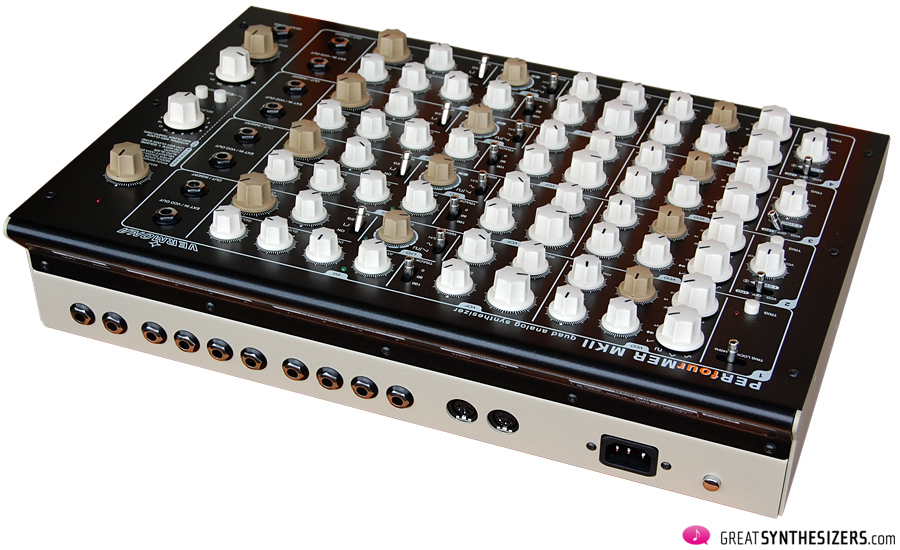
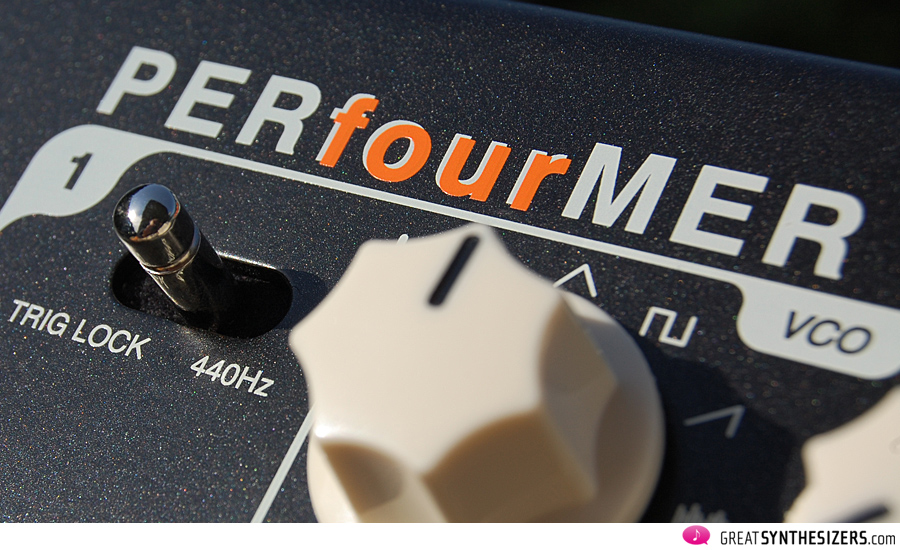
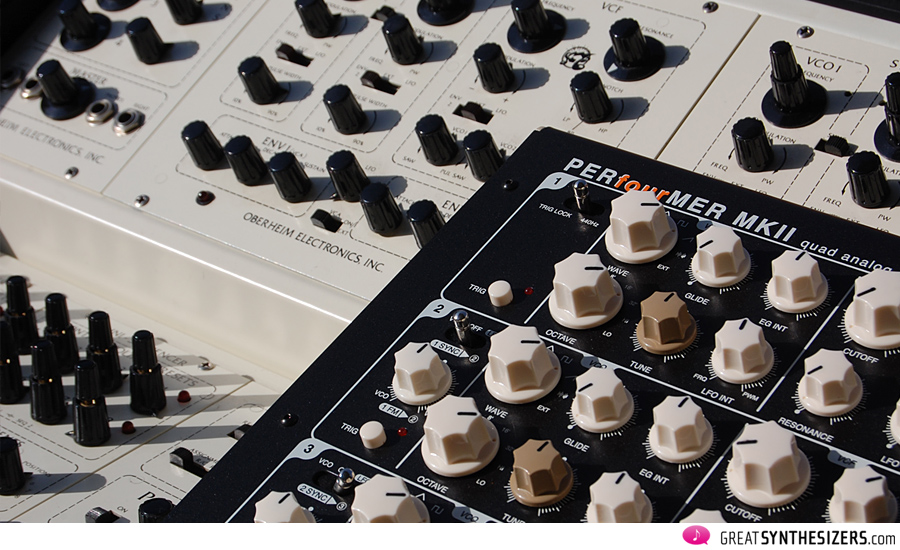
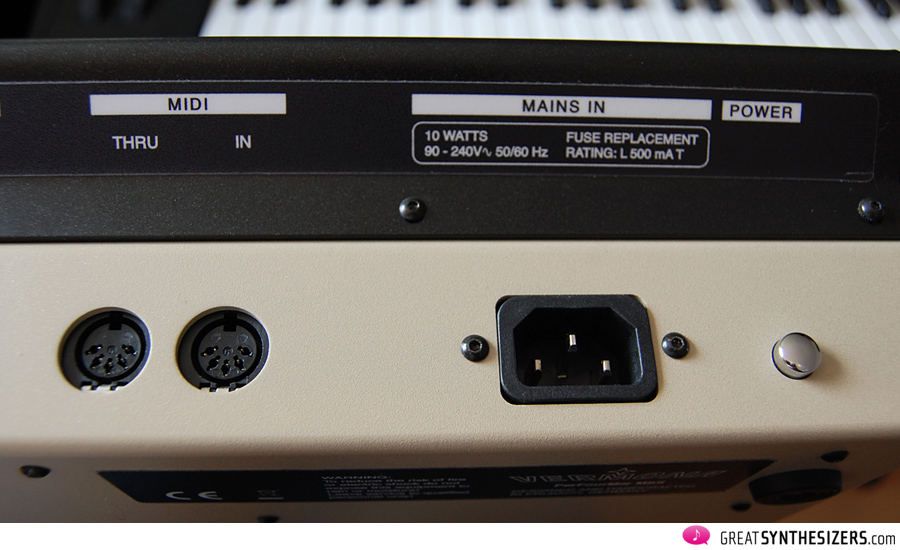
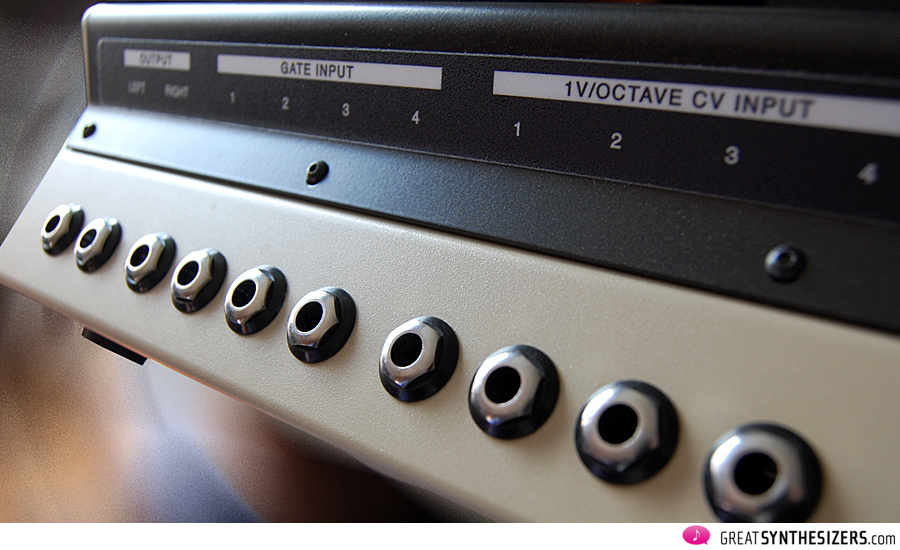
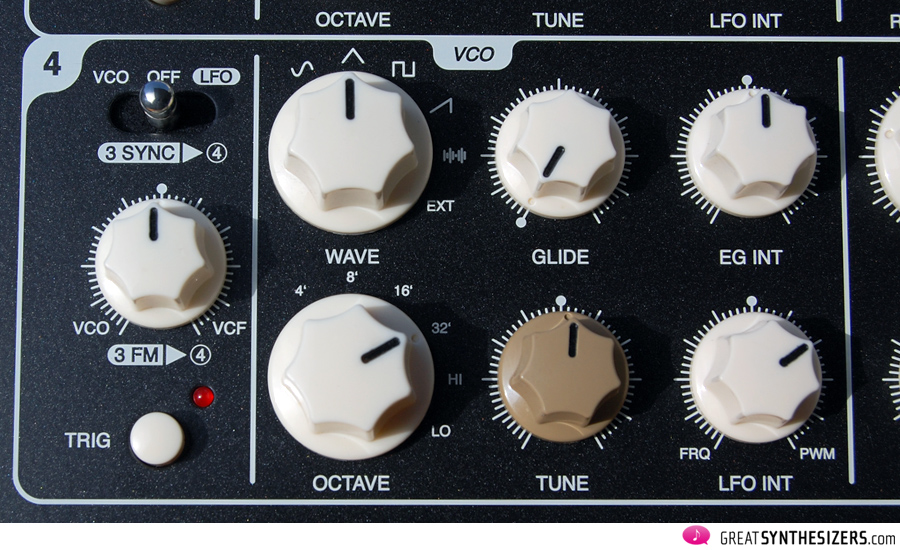
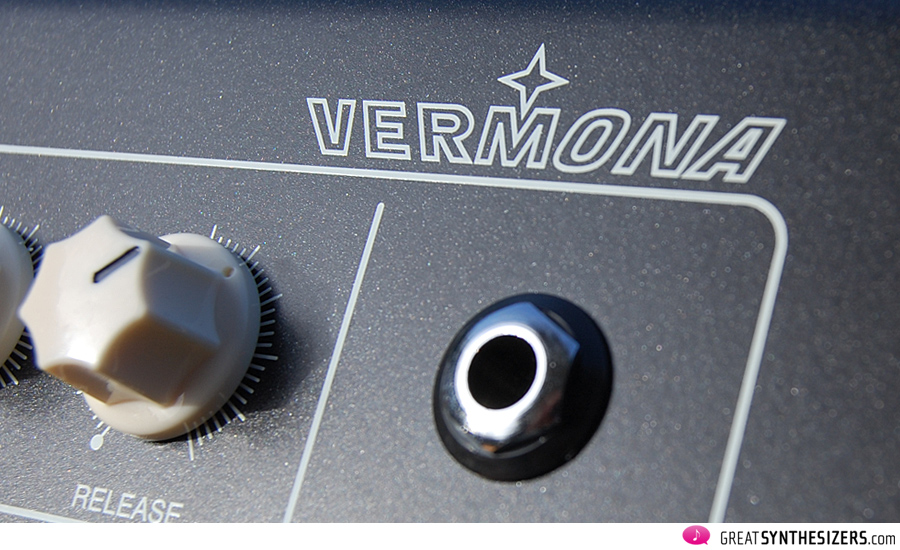
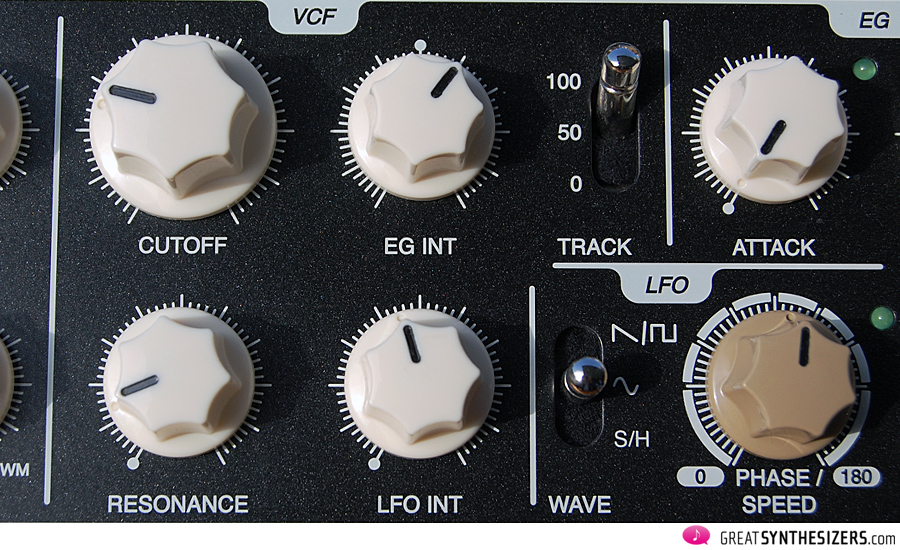
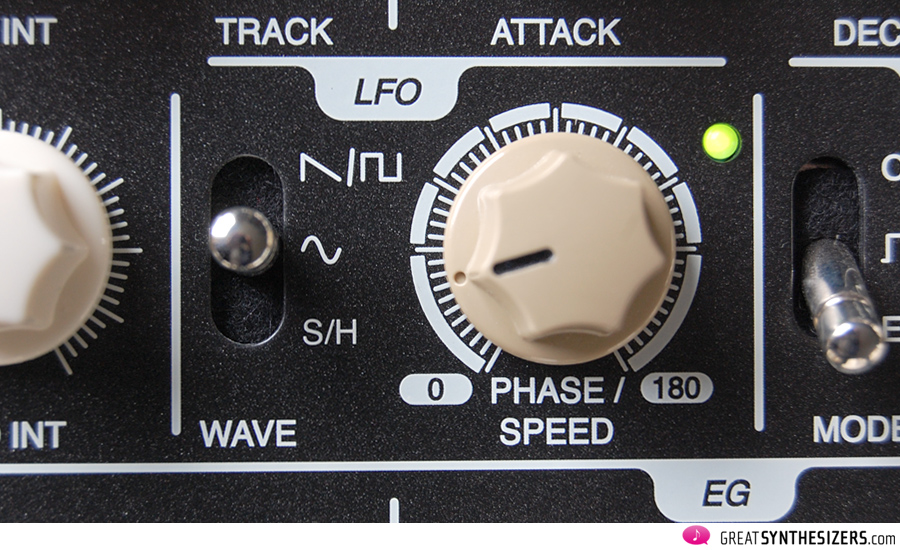
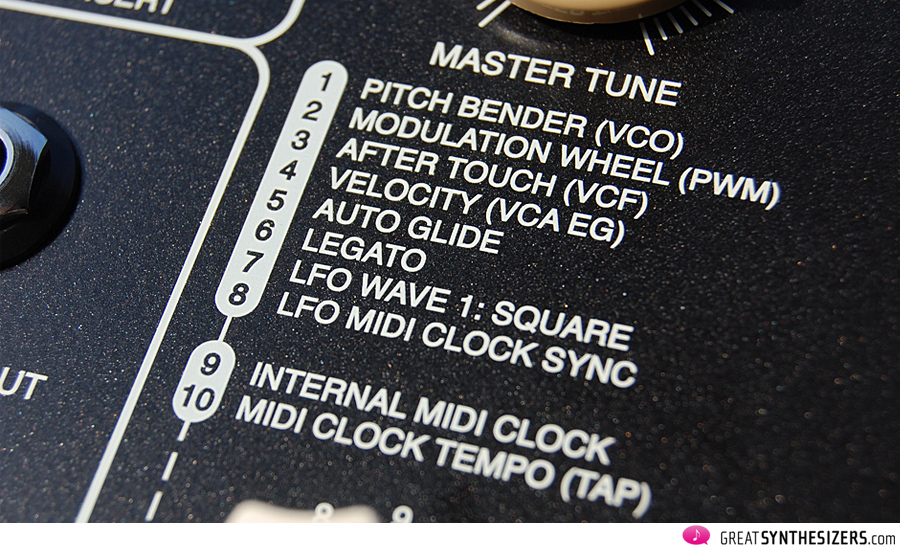
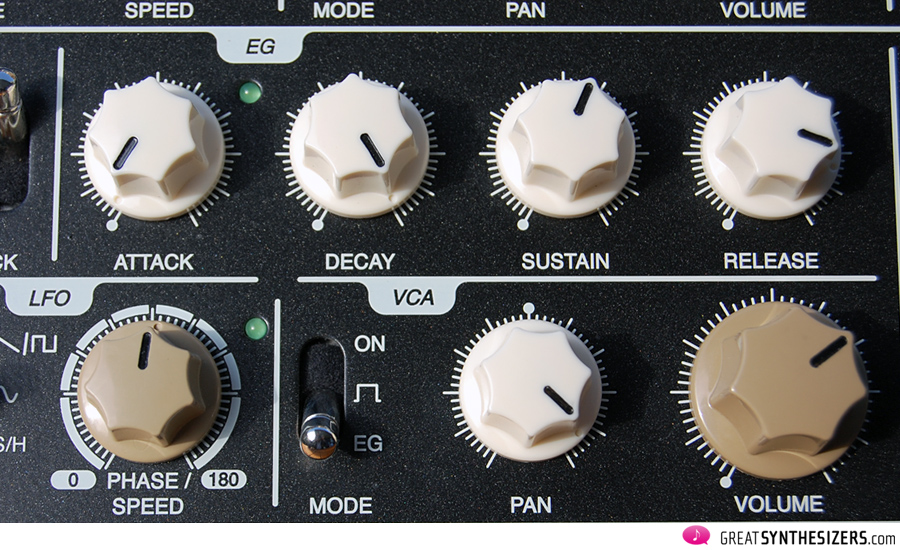

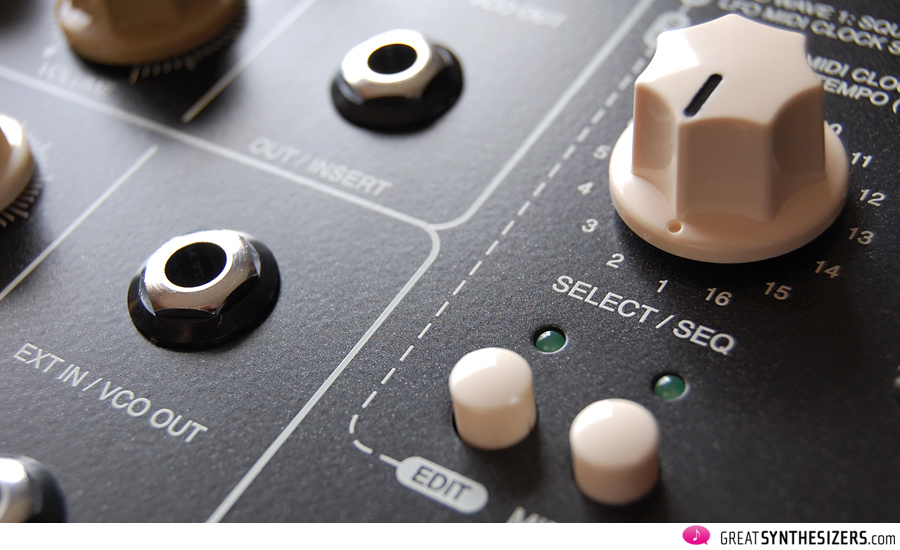
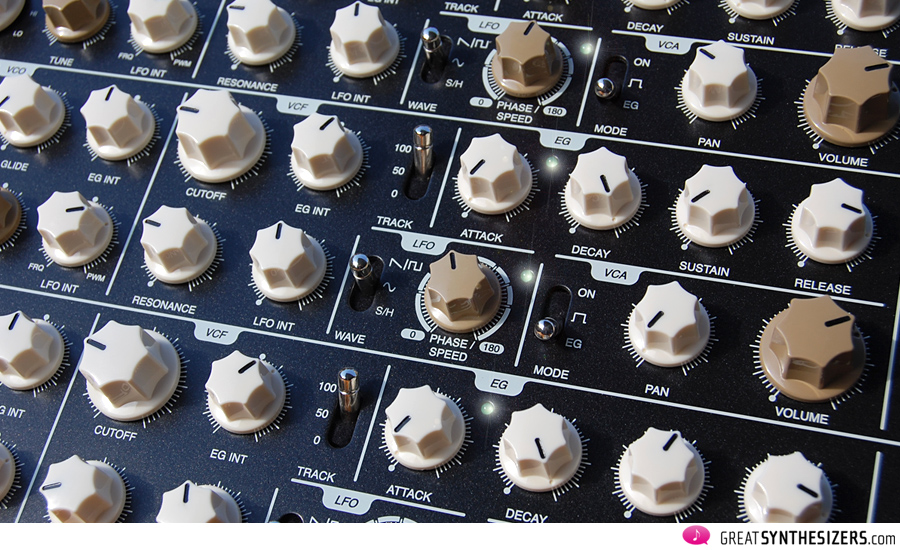
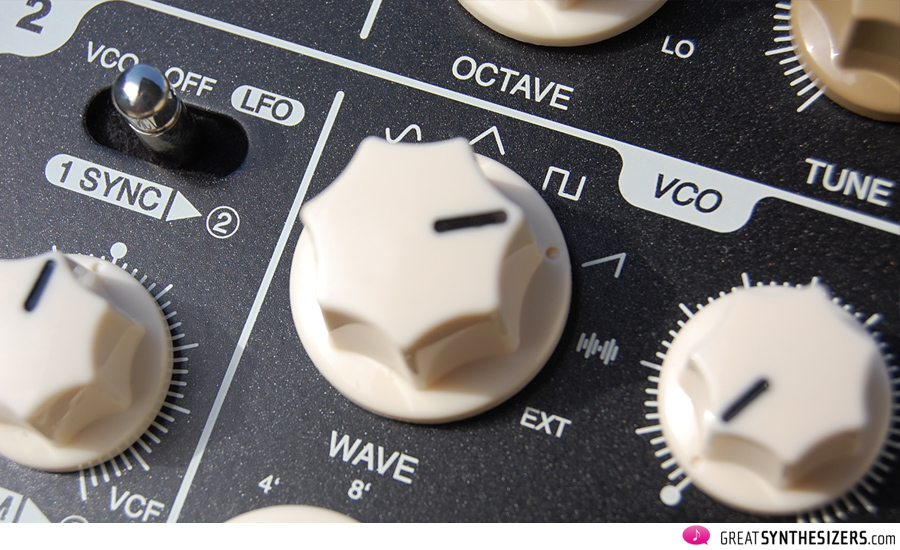
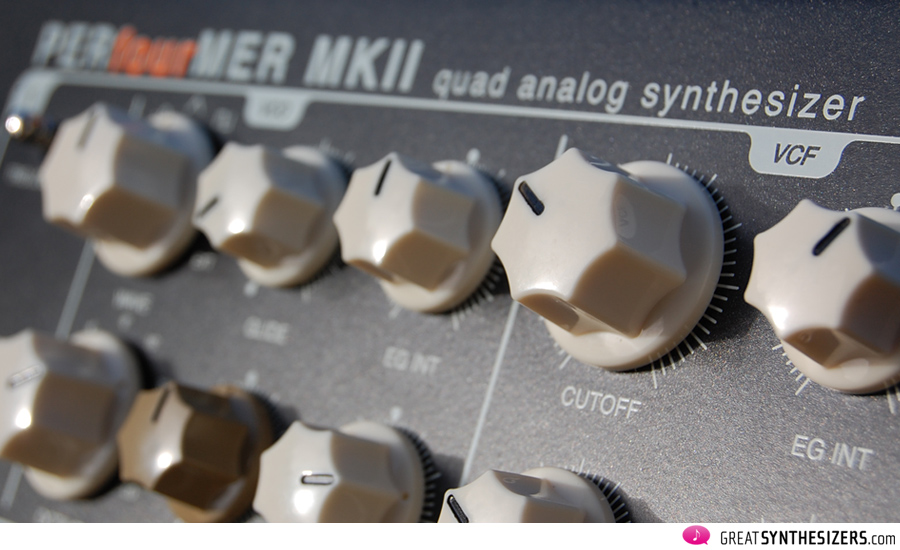
To look at a synth’s features is ridiculous. Number of VCO? Any of the P4M’s single VCOs sounds better than two of them on mainstream synths. One cannot compare by features. Only by ear. And the Vermona sounds really killer !!! Then what it does, combining the monosynths ! It’s evil…impossible not to create a song each time you feed it with a few notes !!!!! Definitely my main synth and keeper !
… wonderful!
I also bought a perFOURmer, and it will be here in a few weeks.
Here is my tentative mono set-up
Timbre Wolf (sounds off) MIDI out controller
controls p4M, MIDI THRU to MS-20Kit keyboard
CV/trig out to stereo monotribes (Hz/V-S-trigger)
Just got a perFOURmer in May 2017.
Plays very well to add the bass back in that is lost when running an
MS-20Kit in Bandpass mode. Also plays well with triangle on my two Monotribes!
… great!
Hi,good site/review.Lovely sounds from this synth! very interested in one but i wonder if the midi spec covers enough?,can’t find the info anywhere,can anyone give details please? i thought id ask here before e-mailing Vermona.cheers
I mean do all pots send/recieve midi cc msg’s.can anyone confirm?.Vermona e-mailed the manual but no explanations.cheers
… hello Gs
The Vermona Perfourmer MKII is a “pure” analog synth. The knobs do not send / receive MIDI CC … There are basic MIDI functions, though, … Velocity, MIDI clock, etc. – but that’s it. What you get is the (near-to-)perfect analog SOUND :o)
Thanks Theo for clearing that up,I pulled the trigger on one the other day,awesome machine.Again a great review,and i also recommend checking out on youtube Great mesmo’s demo enjoy https://www.youtube.com/watch?v=KEIO2kdHqWI
… just listened to it. That’s a complete Perfourmer-Album !!!
I’m really tempted to buy the mk2 with the cv/gate option. I have a couple of questions though I’d like to know first.
I read somewhere that plugging something in the cv/gate inputs bypasses the midi. Is this correct? Or does it bypasses partially? I’d like to send notes and gates over cv but have the lfo’s clocked by midi.
Also: when you use an individual vco output, is the signal from that vco still coming through the master output?
Thanks for the great review and sound snippets by the way.
… will answer soon …
thanks!
glad that you take the time, not only for a good review but also to answer all these questions.
… will be next week (I want to ask a Vermona crew member first) … (sorry for the delay …)
I already sent a question to Vermona support two weeks ago. Guess they were too busy with Superbooth…
… so, I finally gave Vermona a call …
– CV/Gate … CV bypasses MIDI – that’s correct … but just for that specific synth voice that uses CV. In other words: each of the four synthesizer note’s on/off is either controlled by CV or MIDI, not both. BUT: Even if you use CV, all MIDI functions aside from note on/off are still available – such as MIDI clock, etc … So – as you said – a Performer MKII voice can “partially” use CV/gate and – if desired – still recognizes other MIDI functions.
– VCO single voice outputs. Using a regular (mono) jack, the VCO signal is only available via its individual output – and not via the master output as well. BUT: Using a special stereo jack, it “is” possible to make the VCO signal available at both outputs – single VCO “and” master out. There is a schematic somewhere on the Vermona website (seems to be the same DIY solution also used for the DRM drum synth). So, using a special stereo cable, it works …
Vermona will help you out with details (and the schematic for that cable, in case you don’t find it).
Cheers,
Theo
Thank you very much for making it clear. Appreciated!
Same problem here!
Did you find a solution?
[… my PERfourMER MKII works fine. Probably best if you contact Vermona in case the volume drops are of abnormal intensity.]
Really enjoyed reading this fantastic review. Thank you for this! It’s so nice to see such an in-depth dive into synths. The MKII is brilliant, but man I wish the filter had variable key tracking like the previous version
Since the recent Stimming and Tim Shoebridge reviews, there’s been some talk about Vermona modifying the filter since all of these reviews of the original MKII. Apparently Vermona modified the filter quite a bit and it no longer has that resonant character. Both Stimming and Shoebridge were disappointed in the filter pretty much for that reason. Tim Shoebridge contacted Vermona and they confirmed that they did, in fact, modify the it.
I have the newer model with the modified filter. I never got to try the other one, but I absolutely love the sonic character of my PerFourmer MKII and the filter as well. I’m surprised at the recent negative press about the machine.